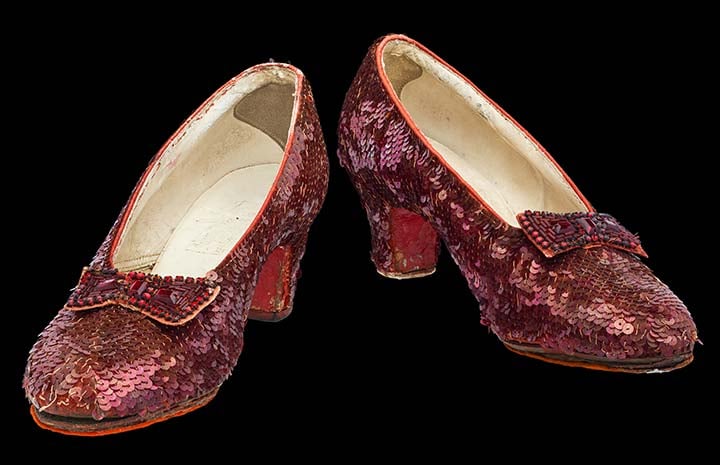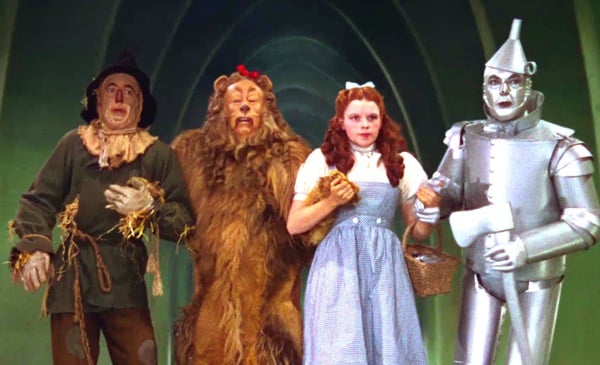Art World
The Iconic ‘Wizard of Oz’ Slippers Are Falling Apart, and the Smithsonian Needs Your Help to Save Them
The museum is trying to raise $300,000 on Kickstarter.

The museum is trying to raise $300,000 on Kickstarter.

Sarah Cascone

One of the most famous movie props of all time is in dire need of conservation. In an effort to preserve Dorothy’s ruby slippers from the 1939 film The Wizard of Oz, the Smithsonian’s National Museum of American History in Washington, DC, has launched a $300,000 Kickstarter campaign.
Almost 80 years after they were made, the ruby slippers are deteriorating, their vibrant color having darkened over the decades due to light exposure. The #KeepThemRuby campaign to save the shoes was launched on October 17, and has already raised over $130,000 with 28 days remaining. It aims to stabilize and preserve the slippers and develop a technologically advanced display case for their future presentation.
“The materials are incredibly sensitive,” said Smithsonian conservator Dawn Wallace in a video on the Kickstarter page. The red sequins were attached to the shoes with mesh netting, which has begun to fray over the years, while the sequins themselves have cracked and faded.

The Smithsonian is looking to conserve the ruby slippers from The Wizard of Oz. Courtesy of the Smithsonian.
Backers can chose from a number of items created by Tony award-winning Broadway costume designer William Ivey Long, as well as a behind-the-scenes visit to the conservation lab while the ruby slippers are being mended. Four backers giving $7,000 or more will receive carefully crafted replicas made from antique shoes with the same methods Hollywood costume designer Adrian used to bring the originals to life.
“The joy of the ruby slippers is that they remain a real icon of American culture,” said Smithsonian curator Dwight Blocker Bowers in a video produced by the museum.
Iconic though they might be, the ruby slippers represent a change from L. Frank Baum’s original book, The Wonderful Wizard of Oz, in which Dorothy sported silver shoes. In a last minute change, the producers of the movie decided to switch to a more vibrant shade, to take full advantage of filming in Technicolor. Now, it’s difficult to imagine them any other way.

A scene from The Wizard of Oz. Courtesy of MGM.
The Smithsonian owns one of four existing pairs of ruby slippers used during the film. Their set was purchased in 1970 for $15,000 at auction after having languished in the basement of the MGM wardrobe department for decades, and was donated to the museum in 1979. The shoes show significant signs of wear, and may have been 16-year-old star Judy Garland’s primary pair for dance sequences.
Another pair of the famous footwear was stolen from the Judy Garland Museum in Grand Rapids, Michigan, in 2005. A decade later, an anonymous benefactor offered a $1 million reward to anyone able to provide information that might help solve the crime. Sadly, the slippers and their thief still remain at large.
The Smithsonian’s fundraising effort reflects only a fraction of the shoes’ potential value. The stolen set were insured at $1 million at the time they went missing, but are now estimated to be worth $2 million to $3 million.
Props from the classic film continue to make a splash when they come up at auction. Dorothy’s iconic blue and white gingham dress sold for just over $1.5 million at Bonham’s in 2015. One of ten versions of the costume worn by Garland during production, the dress is now one of just two extant copies, and sports sweat stains in the neck area.
In 2014, the one-of-a-kind Cowardly Lion outfit worn on set by actor Burt Lahr, made from real lion fur and skins, sold for an even more impressive $3 million, also at Bonham’s.
Among the other Wizard of Oz items in the Smithsonian collection are an early copy of the script, one of the Technicolor cameras used to film the movie, and Ray Bolger’s scarecrow costume.